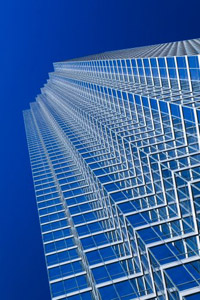 The shattering truth about glass
The shattering truth about glass
 Since the 1960s, there have been numerous, high profile incidents of ‘spontaneous” failure of toughened glass in building facades. In some cases, glass has been known to simply ‘pop’ out of high-rise building windows and fall onto the streets below Why does this happen? The cause lies within the makeup of the glass itself.
Since the 1960s, there have been numerous, high profile incidents of ‘spontaneous” failure of toughened glass in building facades. In some cases, glass has been known to simply ‘pop’ out of high-rise building windows and fall onto the streets below Why does this happen? The cause lies within the makeup of the glass itself.
Nickel sulphide is a rare and unintended inclusion in the production of glass panels. However, the presence of nickel sulphide can be a problematic one. This is due to what is technically called, ‘delayed transformation’.
For those interested in technical detail, these follow:
Nickel sulphide crystals can take one of two forms. At high temperatures, a dense crystal is present. At lower temperatures, a less dense crystal is present. Provided the transition from high to low temperature (ie. cooling) is gradual, the crystal can move between forms without problem.
For example, in ordinary annealed glass, the crystals do not cause problems because the cooling process occurs slowly during manufacture.
 Don’t let your refurbishment get you hot under the collar
Don’t let your refurbishment get you hot under the collar
 When undertaking due diligence work, we often identify instances in which owners have carried out quality refurbishments that include foyers, floors and ceilings.
When undertaking due diligence work, we often identify instances in which owners have carried out quality refurbishments that include foyers, floors and ceilings.
While this certainly does help with the building’s maintenance and appearance, the refurbishment often overlooks a critical part of the equation: the air conditioning unit.
Air conditioners are a critical resource for buildings everywhere. Why is it then that they are so often overlooked? Many building owners do not consider the air conditioning unit to be particularly important in terms of refurbishment. Some owners do not even consider that air conditioning units would ever need to be refurbished. This however, is certainly not the case.
For most buildings, the air conditioning units were installed when the building was constructed. In some cases, this is as many as thirty years ago. As such, these air conditioning systems were designed to suit conditions relevant to the times when the building was originally constructed. For older buildings, this means that the air conditioning was designed to cater for factors that we consider common today such as computers, longer working hours and work station clusters.
Why is this a problem? Computers and body temperature each affect the general air flow required within a building. Consider a 10 storey building with a central air conditioning unit. It is likely that over a period of years, the number of employees within the building would have increased; the required electricity would have significantly increased; and the hours of work would most likely also be significantly greater.
